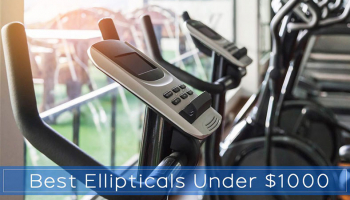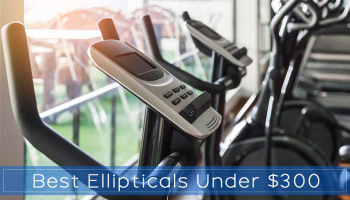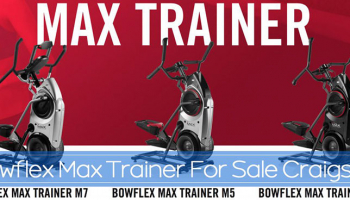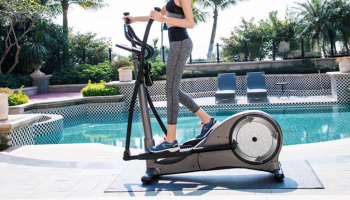
Elliptical machines are becoming increasingly popular compared to other types of cardio equipment. If you are wondering whether elliptical trainers are better than more traditional machines such as treadmills, you may find that making this decision is rather difficult and requires considering a wide range of factors.
In short, the answer is it depends.
Many factors need to be considered, from previous exercise experience to existing injuries and overall fitness goals. Today, we would like to provide a comprehensive overview of both machine types, and provide clear, simple recommendations to help you determine which one is better for you!
Treadmill
Treadmills were invented as a convenient substitute for outdoor running, which they still are these days. Advanced models also allow adjusting the ramp to simulate moving uphill, which usually feels just as natural as it is tiring. Rarely, commercial treadmills even allow for downhill training, although those are not easy to come by!
The main advantages of treadmill training include:
- Applicability of training to real life. As we’ve mentioned above, treadmills were essentially created to mimic normal outdoor runs, jogs, and walks, which they do amazingly well these days. This means that your treadmill training prepares your muscles (quads, calves, hips, hamstrings, glutes – you name it) for actual outdoor runs, and if you are interested in this kind of training, a treadmill is your choice. Unfortunately, training on an elliptical machine won’t get you ready for that half-marathon next year – so if that’s your jam, focus on treadmills.
- Increased core and muscle engagement. Running is a type of motion that makes you lift your feet completely off the ground, which requires increased muscle engagement to maintain balance. This is great for core stability and posture, so that’s a big advantage.
- Essentially, running is a weight-bearing workout.
- If the “treadmill vs elliptical” dilemma is related to choosing a piece of home exercise equipment, available space becomes an important consideration. You will likely find that treadmills are generally shorter, lighter and require less room overall, as elliptical machines need extra space for ocular pedal rotation and bouncing motions.
Of course, there are disadvantages to treadmills as well, the main one being increased injury risk. Every time you lift your feet off equipment, there is a potential for falls due to loss of balance, strains, and sprains. In addition, running can lead to knee injuries, especially where other risk factors are also present.
back to menu ↑Elliptical

Elliptical machines combine two types of movement in one piece of equipment – striding and stair stepping. Most elliptical trainers also offer poles to hold on to, which provides an opportunity for a simultaneous upper body workout.
Benefits of elliptical trainers include:
- Providing a low-impact workout that poses fewer injury risks, as your feet never leave the pedals. As a result, there is very little chance of knee, hip and back injuries, which is especially important for novice athletes, individuals with pre-existing injuries and those carrying excess weight.
- As briefly mentioned above, the movable upper body handles/poles of elliptical trainers allow exercising both upper and lower body at the same time.
- Due to their design, most elliptical machines can be safely pedaled backward – something you can’t achieve with treadmill training. This allows for more elaborate hamstring workouts, which can be a great addition to your cardio routine.
- As elliptical machines allow for adjusting resistance levels thus forcing users to push the pedals and move the handlebars utilizing more power, elliptical training becomes an excellent resistance workout. This, among other benefits, has profound effects on the musculoskeletal system. On the contrary, running on a treadmill does not provide resistance exercise.
- Elliptical machines require much less maintenance compared to treadmills, which you will inevitably have to service periodically. These extra costs are often overlooked when purchasing home exercise equipment – of course, if you’re training at a gym, this point is irrelevant.
The main disadvantage of elliptical machines is how bulky they usually are compared to treadmills. In addition, elliptical machines are usually more expensive – although, as we’ve mentioned before, treadmills require more regular servicing, which evens the price out more or less.
back to menu ↑Which one burns more calories?
As both apparatuses are often utilized in weight loss exercise programs, the calorie-burning potential of both machine types is discussed frequently in the fitness world.
In other words, people want to know which machine makes you work harder…and turns out that both machines have similar potential for weight loss! When maximum effort is applied, there is no significant difference between the results elliptical trainers and treadmills produce when it comes to physiological outputs. A study examining the effects of a 12-week exercise program using different types of cardio equipment confirmed that in moderately active individuals, similar physiological improvements occur, regardless of the machine used. Collectively, research suggests that the calorie-burning potential of both machine types is roughly the same, and the end result depends on exercise intensity, which varies between athletes. But it also depends on the design of the machine. If you want to burn up to 2.5X more calories, Bowflex Max Trainer M5 is a good choice.
Interestingly, recent evidence also suggests that when it comes to perceived exertion rates, there are no overall differences between treadmills and elliptical machines, therefore suggesting that personal preference and overall training goals are still the most important factor here.
back to menu ↑Elliptical vs Treadmill: Which machine is better for you?
In conclusion, since both machine types offer similar weight loss potential, the final choice depends on your individual circumstances. For instance, if you have access to both types of equipment and don’t have any injuries incompatible with treadmill training, why not alternate between both? Adding variety to your cardio regimen will help avoid monotony whilst also enjoying the benefits of different types of equipment, such as activating different muscle groups as opposed to doing the same form of exercise repeatedly.
Face two choices, consider all the pros and cons of both apparatuses listed above! If you are an experienced athlete training towards specific running goals or working on improving your already great core stability, a treadmill is probably a better choice for you.
If you are new to exercise, have excess weight or pre-existing injuries, elliptical trainers may be a better option. Elliptical machines are great for those wanting to cross train effectively while engaging in low-impact exercise routines. In addition, elliptical machines offer additional benefits such as resistance training and various exercise options, such as pedaling backward to target different muscle groups.
And finally, remember: almost any type of fitness equipment can provide amazing benefits if you use it consistently! Choose wisely, hold yourself accountable – and you will achieve your fitness goals in no time.






